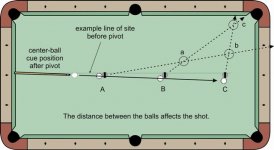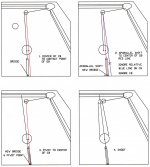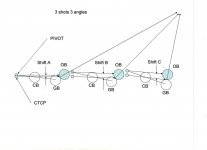Mike,
In my line of work, I am tested on every design that I effect. They are peer reviewed; they are prototyped, qualified, analized by the "best and the brightest"...then pre production and full rate production.
I abide by Occam's Razor to get to the nut. I/we reverse engineer the competition, and employ cutting edge science. We have taken Carpet Bombing out of the equation and developed the GPS guided WW2 bombs..."One target, one bomb in any weather". We are getting the Bad Guys in the ME.
As I said at the outset, this is an academic excercise for me. I became impatient with the vague CTE explanations. I don't think that it is fair to teach the student how to employ parallax to alter CTE to accomplish the other cut angles not presented by the single angle of CTE.
I shoot with discipline for I lack natural talent. I have shot against my peers who shoot by feel...when they are on, they are unbeatable, but when they are off - they have nothing to fall back on. If they lack the fundamentals, they are lost.
Aiming must be understood and the more methods that one has in their pocket, the sooner one can get back on track on those bad days. I have found the double distance method the most parsimonious for it is succinct and not frought with the many variables of pivot systems.
Back in the day, there were no teachers..."don't feed the fish" etc. lol.
I had to teach myself or go broke. The survivors had a sense of the game. Though reading the CTE threads, teachers are instructing those without that sense....which side of the OB to send the CB to the pocket on the left???...Where CTE is useful.
I don't flatter myself as having found anything new with Aparallel CTCP for all systems must deliver the CB to the GB.
What I am surprised with is the lack of clarity in the description of what one proffers. That is why these threads go on for 700+ posts before they die...with recrimination that there are aiming threads in the first place.

This one hasn't though since I have lost my audience several posts ago...save you?
Perhaps I have landed on a novel method of aiming that could be of use to some...or not. I don't know for I don't teach nor are there many that are amenable to instruction where I shoot when I try.

I thank dr_dave, Jal and you for peer reviewing my academic folly. It seems that only you appreciate the impact of perspective on learning the game we love.

I have asked a couple of optics experts at work and they seem to think that what I have been toying with is collimation, but I won't go there...here.
I will explore if the bridge length behind the CB has any effect on the shift and pivot.

Thanks for your interest and your humoring me.



